Ho, Ho, Ho! Our Journey Through the Silent Night, Deadly Night Begins with a Fond Look Back at 1984's Silent Night, Deadly Night, Which Scandalized a Nation and Launched an Unlikely Franchise
Here at Nathan Rabin's Bad Ideas, it's always Garbage Day!
If you were not alive in 1984, it can be hard to imagine what a bizarrely big deal Silent Night, Deadly Night was when it was released. The sleazy, low-budget Yuletide shocker became national news thanks to a public outcry led by Citizens Against Movie Madness, a mom-centric aggregation of moralistic scolds who picketed theaters showing the film with crude homemade signs reading “Save Santa” and “Santa is NOT a Murderer.”
Silent Night, Deadly Night was seen as a particularly egregious slasher film and a sign of societal decay.
Gene Siskel took to the airwaves to call the film’s commercials, which focused on the image of an axe-wielding killer Santa Claus, “sick and sleazy and mean-spirited.” The outraged and indignant film critic named and shamed everyone he held responsible for what he saw as an insult to cinema, propriety, and everything good and wholesome about us as a nation.
Siskel didn't just object to Silent Night, Deadly Night on creative grounds; he found it morally repugnant and felt that everyone involved should feel ashamed.
“Shame on you,” Siskel scolded explicitly, his voice vibrating with barely suppressed rage. Siskel felt everyone involved with Silent Night and Deadly Night belonged on the naughty list.
And if Silent Night, Deadly Night teaches us anything, it’s that there are severe consequences for not being nice, most notably in the form of brutal axe killings. Siskel thought that Silent Night, Deadly Night was bad and wanted to punish it severely.
“Your profits truly are blood money,” Siskel told the people behind what he described as the most contemptible cinematic abomination since I Spit on Your Grave.
In that respect, Siskel was not unlike the film’s protagonist, who grows up seeing Santa Claus less as an endlessly benevolent gift-giver and more as a psychotic figure of vengeance who will destroy the wicked and unworthy in brutal and creative ways.
Roger Ebert’s criticism was equally outraged, extreme, and personal. He said of the sleaze merchants behind the film, “I would like to hear them explain to their children, and their grandchildren, that it’s just a film.”
It’s more than a little ironic seeing and hearing Ebert express soul-consuming rage towards the makers of sleazy exploitation movies, considering how many sordid, provocative, and sex-obsessed soft-core romps he wrote for Russ Meyer.
A cheap horror movie with a no-name cast probably would have been forgotten without all the publicity the boycott engendered. Instead, it became a flashpoint in our never-ending Culture War.
Parents were particularly apoplectic that advertisements for Silent Night, Deadly Night appeared in places where small children could see them, such as afternoon football games or the newspaper.
They did not want to explain to their children why Santa Claus now had an axe and seemed menacing and psychotic instead of jolly and kind.
I was eight years old when Silent Night, Deadly Night was released. I vividly remember being struck by its central advertising image, which showed the axe-wielding arms of a killer Santa emerging from a chimney.
It’s worth noting that at no point in Silent Night, Deadly does its slasher go up or down a chimney. That's not his deal. He’s not into gift-giving and rewarding, just life-taking and homicidal punishment. It doesn’t ultimately matter. All that matters is that the ads for Silent Night, Deadly Night were ultimately too good at generating interest and conversation. Fortunately and unfortunately for the filmmakers, the interest was overwhelmingly negative, and the conversation revolved around whether the movie represented a terrifying nadir for not just pop culture but Western civilization as a whole or whether it was just an abysmal movie.
Silent Night, Deadly Night’s advertising is what really got people’s attention, but the film itself seemed designed to stir up controversy as well.
The Christmas-themed slasher begins ominously with a prologue in the 1970s that illustrates the horrifying formative trauma that turned a sweet little boy into a teenage mass murderer.
Five-year-old Billy Chapman (Jonathan Best) travels with his mother and father to see his grandfather in a psychiatric institution. The creepy grandpa appears mute and catatonic when Billy's parents and baby brother are around. But when the mental hospital resident is left alone with the traumatized five-year-old, he suddenly comes disturbingly to life and begins talking to Billy about how Christmas Eve is the most terrifying night of the year because if Santa Claus thinks that you’ve been naughty, he will punish you harshly.
It’s an extremely effective scene because it takes the discomfort we all experience when left alone with weird old relatives we barely know and have nothing in common with and ratchets it up to the level of horror, but also because the child actor is convincingly freaked out and the elderly thespian is legitimately terrifying.
It’s all downhill for poor Billy from there. Billy’s parents make the fatal mistake of stopping for a hitchhiker in a Santa suit. What they do not know, and cannot know, is that this sick Santa recently murdered a clerk for thirty-one measly dollars and is excited about killing again.
The crazed killer fatally shoots Ricky’s dad and then sexually assaults his mother in front of him and his baby brother. He then slits the mother’s throat and goes looking unsuccessfully for Ricky.
It’s a horrifying sequence that reminded me of Last House on the Left. Like Wes Craven’s directorial debut, Silent Night, Deadly Night is not potent because it is artfully made or sophisticated. The antithesis is true. Last House on the Left and Silent Night, Deadly Night, are tremendously effective because they are so artless, tawdry, and raw. They are more analogous to grindhouse and outsider art than conventional horror films.
Billy and his brother Ricky end up in a Catholic orphanage run by Mother Superior (Lilyan Chauvin), a sadist who shares Billy’s grandpa’s conviction that life is mostly about guilt, shame, and punishment.
In its superior first half, Silent Night, Deadly Night is a crude but incisive exploration of the almost unfathomable pain of early trauma and how it persists and spreads like a virus or a disease.
Billy’s childhood is so terrifying and tragic that it’s hard not to feel compassion towards him. He is the hate that hate made, a cursed soul who never stood a chance.
The orphan grows up to be a strapping teenager with sinewy muscles and many issues around Christmas and Santa Claus.
A kindly nun who takes a liking to Billy helps get him a job in a toy store, and his enthusiasm and strength make him a valuable member of the team.
As a member of Generation X, the toy store scenes in Silent Night, Deadly Night are pure nostalgia porn. Oh, but I wanted to go back in time and snag all of those Muppets stuffed animals and Star Wars play sets! I could have spent a happy half-hour just gawking at all the nifty toys in the background.
Incidentally, I can’t imagine that Jim Henson and George Lucas approved of their beloved creations being associated with possibly the most reviled movie of the 1980s.
Having Billy work at a toy store filled with the hottest toys of 1983 (when it was filmed) lends the movie a documentary aspect. It’s a sociological document of the world's appearance when the film was made on top of everything else.
Working at the toy store suits Billy to the extent that we’re treated to a “Billy enjoying his new job” montage. He can only keep the darkness at bay for so long, however. Despite his homicidal hatred of the character and the holiday he represents, Billy is pushed into playing the store Santa when the original fake Kris Kringle is unavailable.
The look in Billy’s eyes when he reluctantly accepts the worst possible gig silently but insistently says, “I hate being in this suit so much that I am going to embark on a killing spree.”
Billy’s coworkers, unfortunately, do not recognize that very specific expression. So when he attends a debauched Christmas party in his Santa suit and sees a sleazy colleague try to sexually assault another coworker, he snaps.
He flashes back to watching his mother be sexually assaulted and kills the man. Then, for good measure, he kills the woman as well. He figures that he might as well finish what he started, so he kills all of his other coworkers too.
At this moment, about halfway through the film, Silent Night, Deadly Night stops being a movie about trauma and child abuse. It becomes a standard-issue slasher movie with a dude in a Santa suit instead of a modified William Shatner mask.
The hokey gimmick is that Billy takes the whole idea of Santa knowing whether people have been bad or good to psychotic extremes by murdering anyone he considers naughty. While murdering these poor folks, Billy is sure to say “naughty" or “punish” so that in their final breaths, his victims can know why he’s murdering them.
What makes Billy interesting and complicated is that he is a victim as well as a victimizer. Life has been unrelentingly cruel to him, so when he starts killing people, it’s unfortunate but also understandable.
As the final boss for his Christmas killing spree, Billy goes after the nun who made his life hell as a boy but is cut down in a hail of bullets.
At this point, Billy’s younger brother utters the word “naughty”, promising to begin the bloodshed again in the inevitable sequel.
There’s never been a movie quite like Silent Night, Deadly Night. That might seem strange considering that the sequel recycles a solid half hour of Silent Night, Deadly Night in its early going. Despite its shameless theft and self-cannibalizing Silent Night, Deadly Night Part 2 manages to be even crazier and more psychotic than its predecessor, a movie as insane and debauched as its very bad reputation would suggest.
Critics and moralists wanted very badly to punish Silent Night, Deadly Night for being naughty, but the free market instead rewarded them. A movie that many people felt strongly shouldn’t exist in the first place spawned not just a uniquely bonkers sequel but an entire nutty franchise I could not be more excited to explore with you.

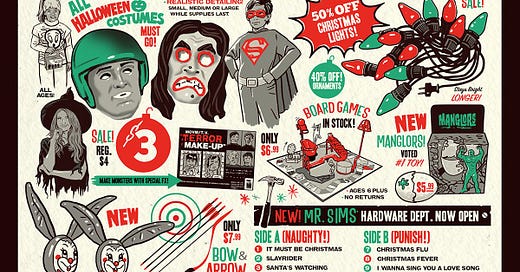


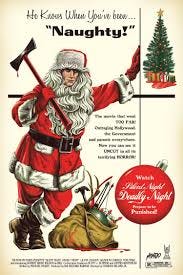
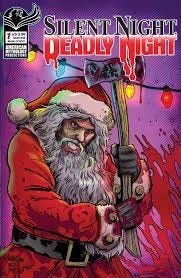

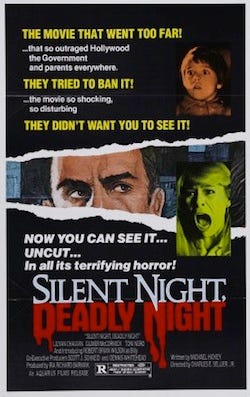




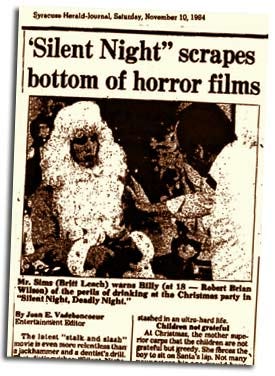
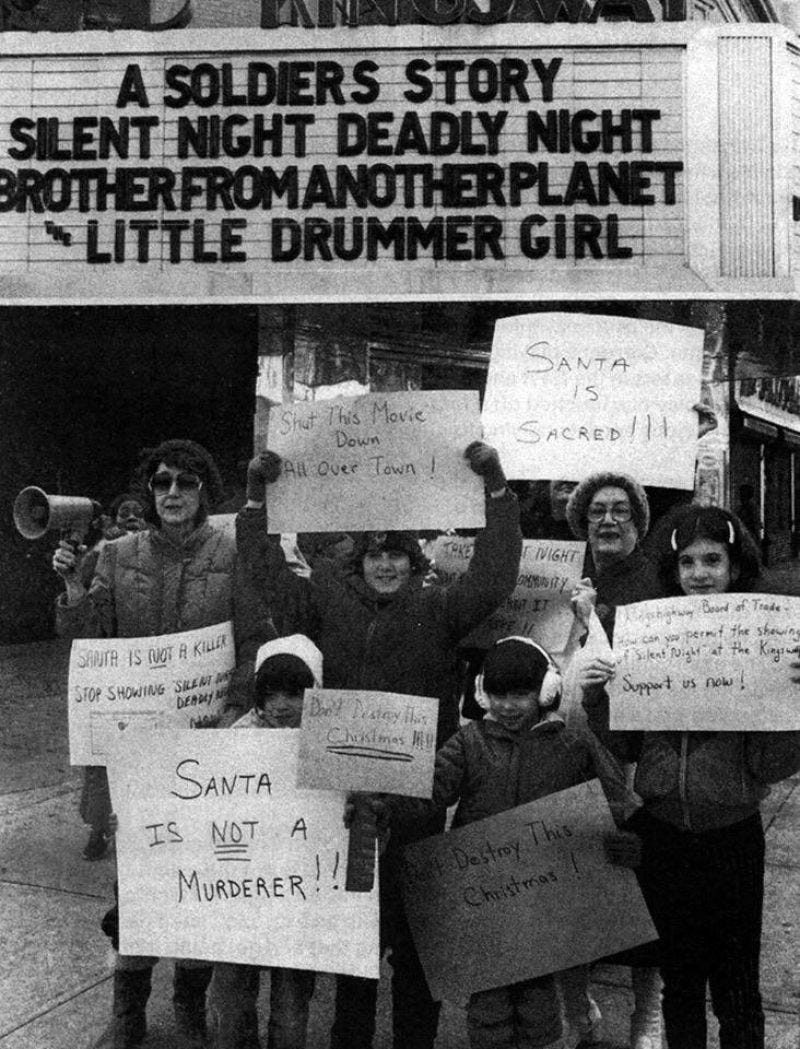

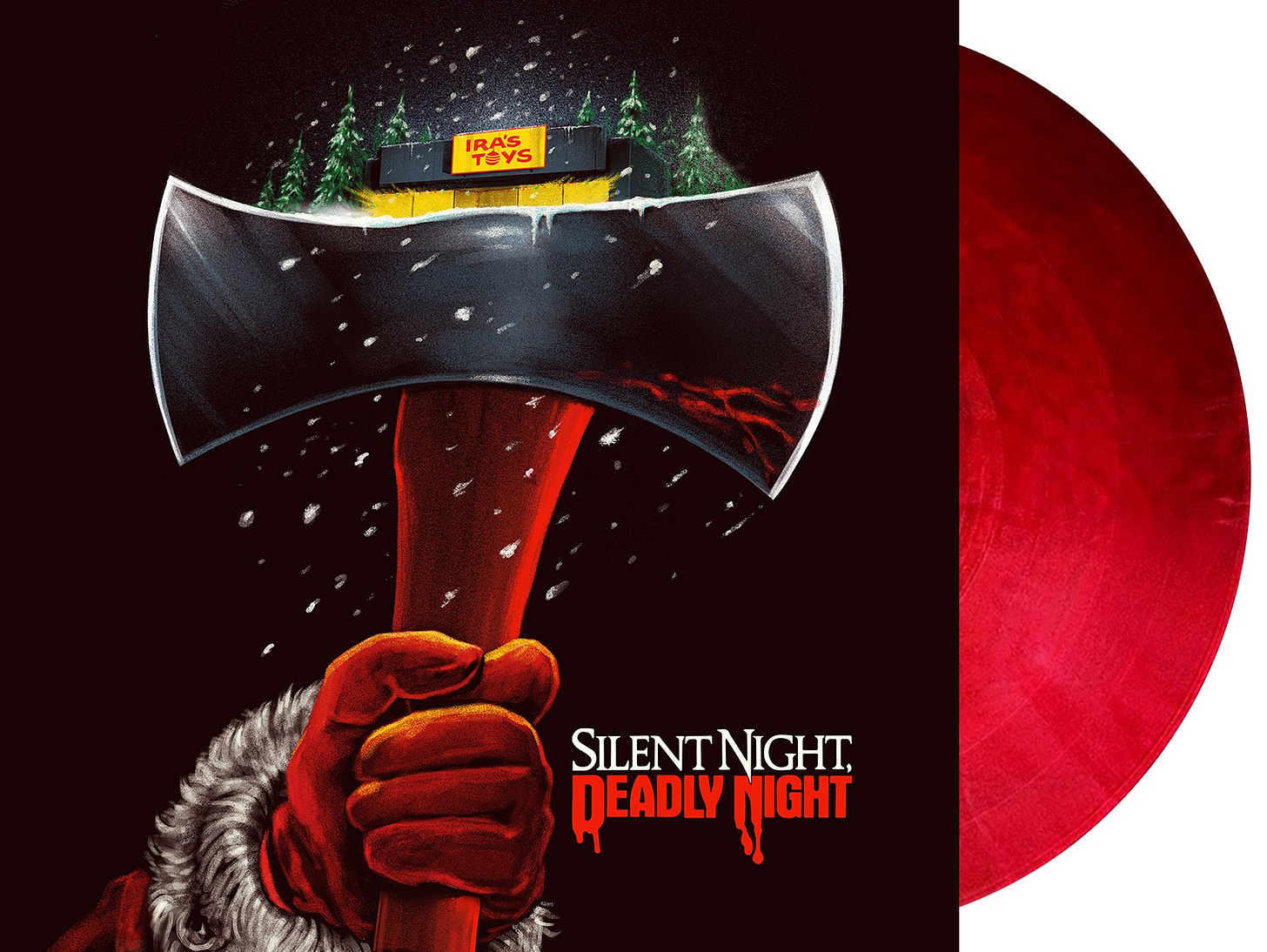
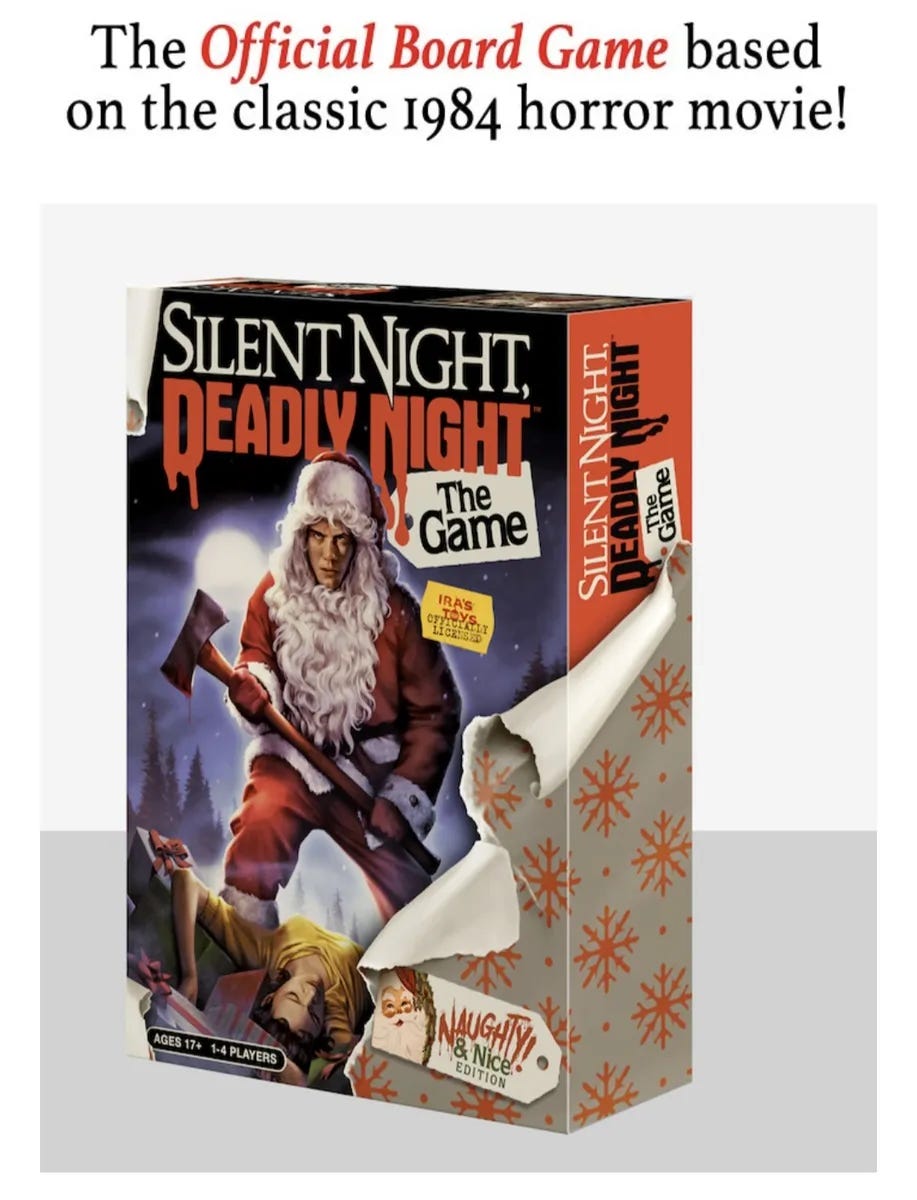

Get ready… No street parking on GARBAGE DAY!!!
No joke about Gen X and toy store scenes. I was watching, of all things, "The Toy" with Richard Pryor and in a toy store scene, I was gawking at the Mego super hero figures on display, pristine in boxes. You instantly want a time machine to go back and play with those toys! Maybe not play with them - I wanted to go and collect all of them, in perfect condition.